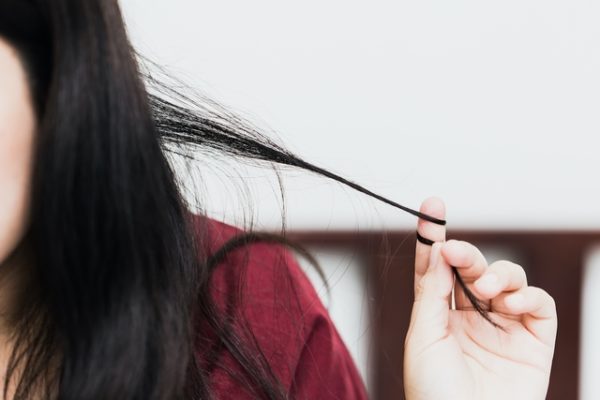Trichotillomania is a psychological disorder known for the mania of pulling out hair, where there is an obsession in pulling hairs from the head or body hair, such as eyebrows and beards, in an uncontrollable way. The person with this type of disorder can start by pulling only a few hairs or strands, however, it can progress until removing strands of hair.
This mania for hair pulling is curable and treatment should be indicated by a psychiatrist who usually prescribes medication for anxiety and depression, in addition to therapy sessions with a psychologist. However, it is important to start treatment immediately, as it can take a long time, trichotillomania can cause baldness, and as some people with this disorder swallow their hair, complications can happen due to the accumulation of hair in the stomach or intestine.

Main symptoms
Trichotillomania, known as hair pulling mania, is a disorder that causes signs and symptoms such as:
- Stir the hair constantly;
- Repeatedly pulling or curling hair or eyebrow or eyelash hair;
- Have regions of the body or head with lack of hair or hair;
- Suck, chew, bite or swallow hair;
- Feel relief or pleasure after plucking hair or strands of hair.
The diagnosis is usually made by a psychiatrist or psychologist, with the help of family or friends, by observing the behavior, checking the lack of hair in the scalp region, for example, and in some cases, the disorder is identified through symptoms such as abdominal pain, nausea, and vomiting caused by eating too much hair.
Often, people with trichotillomania experience shame and deep sadness, as the hair loss caused by the disease can be very evident, being visible through bald spaces on the head.
In addition, the mania to pull out the hair can worsen in some situations, such as in periods of more stress or anxiety or even in moments of relaxation, such as watching television, on the beach or driving, for example.

How the treatment is done
Trichotillomania is curable and treatment should be indicated by a psychiatrist who can recommend the use of antidepressant and anxiolytic drugs because often, the person who has this mania can also have obsessive-compulsive disorder or depression. Follow-up with a psychologist can also be advised for psychotherapy sessions, such as cognitive-behavioral therapy.
In less severe cases of the disease, some small changes in daily habits may be sufficient to treat the problem, such as:
- Wet the hair in the moments when the desire to pull out hair appears;
- Do activities that keep your hands busy, such as gardening, painting or cooking, for example;
- Tie your hair up with a tiara or wear a hooded top, especially for sleeping;
- Brush your hair or wash it, replacing the urge to pull out hair.
You can also perform relaxation and meditation activities to try to control anxiety and stress, such as doing a few yoga sessions.
Possible causes
The causes of trichotillomania are not yet fully known, but it is known that factors such as childhood trauma, suffering from depression or obsessive-compulsive disorder, and having anxiety or stress can influence the onset of this mania.
Some studies have been developed to show that some changes in specific regions of the brain may be involved in the appearance of this disorder, just as people with a family history of trichotillomania are more likely to develop the same problems. In addition, trichotillomania occurs more in childhood, between 9 and 13 years of age, however, it can affect people of any age.
What are the complications
The main complications that appear because of trichotillomania can be baldness, hairless spaces on the scalp, absence of eyebrows or eyelashes, beard flaws, and diseases in the stomach or intestine that occur due to the accumulation of hair in these organs.
